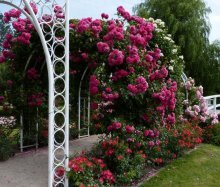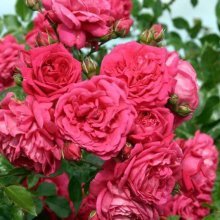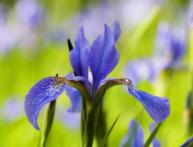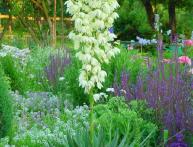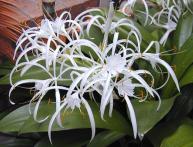Rosa Laguna: a climbing beauty in your garden
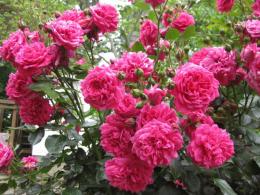
There are many beautiful plants and flowers in the world. However, for many centuries roses remain the most beautiful inhabitants of gardens and parks. Rose The climbing "lagoon" only confirms this rule with its beauty.
Content:
- Description of the variety "Laguna" climbing
- Features of growing climbing rose "Laguna"
- Basic care measures
Description of the variety "Laguna" climbing
In the world, several companies whose history goes back at least a hundred years are involved in the breeding and cultivation of roses. The German company Wilhelm Cordes and Sons is one of them. Founded at the end of the 19th century, it has been working for many decades on varieties that are beautiful and unpretentious. The founder of the company, the former German sailor Wilhelm Cordes, and all his followers, tried to obtain hardy roses that were tolerant to disease and frost.
As a result of their work, many wonderful and unpretentious varieties appeared. Rose "Laguna" is one of the modern varieties from the group of climbers. The shoots of this variety are straight, with good branching, their height is 1.8 - 2.5 m. The foliage is dense. The leaf blades are dark green, shiny, the leaf size is medium. The buds are large, intense, red-crimson in color, with a pointed top.
When opened, the flower cup has a diameter of up to 10 cm. It becomes a rich pink-crimson color. Densely double flowers, consisting of 50 - 60 petals, collected in brushes of 7-8 pieces. The shape of the flowers is reminiscent of ancient rose varieties.
At the height of flowering, the bush is completely covered with buds and flowers, with almost no foliage visible from underneath them. The flowers have a rich, dense aroma of fruit and wild rose hips. Rose "Laguna" is a repeat-blooming climbing rose. Repeated flowering is not inferior in intensity to the first. The variety is unpretentious, frost-resistant and almost not susceptible to common rose diseases.
Among the disadvantages of the variety, numerous sharp thorns should be noted. In addition, in order for the bush to look neat and decorative, after flowering has finished, old flowers must be removed; they do not fall off on their own. Despite the fact that the variety was presented to the public only in 2004, it almost immediately gained recognition in the world. Over the past years, he has regularly become a prize-winner of the world's most prestigious rose exhibitions and competitions. Both an experienced florist and a novice florist can grow it on their own.
Features of growing climbing rose "Laguna"
Planting and growing this variety is not particularly difficult; grafted seedlings and seedlings obtained from cuttings take root quite quickly. Like all representatives of this group of roses, "Laguna" prefers well-lit places with good aeration.
However, for this variety it is necessary to provide shade during the hottest afternoon hours, this will protect the flowers from quickly fading. Roses can be planted both in autumn and spring. If the autumn weather in the region makes planting and rooting roses impossible, then this event should be planned for the spring.
As soon as the soil warms up to + 10 + 12 degrees in spring, you can start planting roses. In most temperate regions, roses are planted in the ground from late April to late May.The best soil for growing roses is fertile loam with a neutral or slightly acidic reaction. Roses absolutely cannot tolerate empty sandy and rocky areas. soils.
The planting hole should be about 50 cm deep and about 60 cm wide. It is advisable to arrange it half a meter from a wall, gazebo, column or other vertical support. Stepping back from the wall at least 10 cm, you can also attach a mesh or lattice, along which the shoots will climb up. If there is nothing vertical near the landing site, a buried pole or a tripod installed nearby will save the situation.
To fill the hole you need to prepare a mixture:
- two buckets of fertile garden or garden soil
- bucket of humus
- bucket of sand
- half a bucket of peat
- 400 g wood ash
- 40 g of universal mineral fertilizer
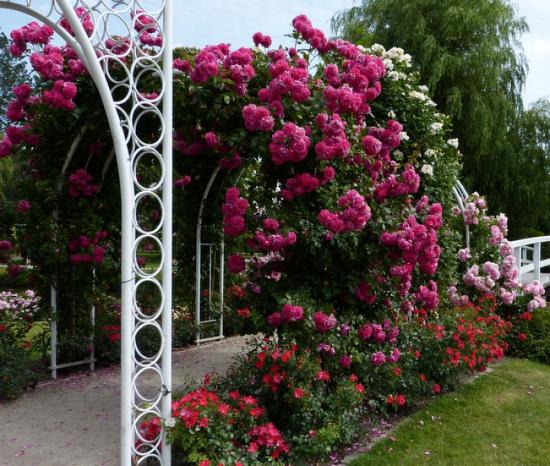
It is advisable to moisten the mixture a little. Wet soil fills all the voids between the roots more densely. Some of the mixture is poured into the bottom of the hole, after which a bucket of water is poured out. After watering, the mixture is added so that the root collar of the seedling is just below ground level.
If seedling purchased with open roots, you need to inspect them, cut off the damaged roots and put the rose in cold water for a day or leave them in a liquid mixture of clay and mullein for two hours, in a ratio of 2 to 1. Place the seedling in the hole and cover the roots with the prepared mixture, lightly compacting each layer. After planting, the bush is watered.
It is imperative to ensure that the root collar is 6-8 cm below the soil level. This position protects the grafting site from drying out and prevents the buds on the rootstock from waking up, which will provoke the growth of wild shoots. If necessary, after watering, add soil to the desired level.
Then mulch the space under the bush with peat or rotted compost.
Taking into account the fact that the variety belongs to clumbers, the shoots are cut 35 - 40 cm above the ground. During the first two weeks of cultivation, climbing rose seedlings are protected from direct sun. Further care of the plant is not difficult, but has some specifics.
Basic care measures
All the main activities for caring for the Laguna rose can be outlined in just a few points:
- watering
- feeding
- pruning
- shelter for the winter
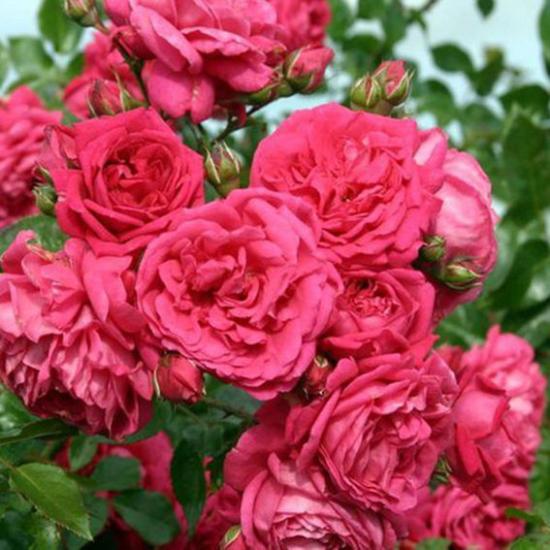
In the first year after planting, young bushes are watered once every 4-5 days. In subsequent years, it is enough to water the climbing rose bushes once every 9-10 days in the absence of rain. Despite the fact that these roses are not afraid of drought, since they have powerful roots that go deep into the ground, you should not wait for the soil near the bushes to completely dry out. The best time for watering is early morning or evening, when the sun sets below the horizon.
Important! Watering should be carried out directly into the tree trunk; sprinkling is not advisable for these roses. If the planting pit was filled with organic matter, then in the second year the rose is fed 4-5 times per season only with mineral mixtures. At the beginning of the growing season, nitrogen fertilizers are applied, in the middle - phosphorus and potassium, and at the end - only potash. Organic fertilizers are applied once every two years.
The next year after planting, the first pruning is carried out. It must be remembered that this variety produces abundant buds on the branches for three years, after which the branches need to be cut out. In the spring, sanitary pruning is carried out and all weak or frozen shoots are removed. The remaining shoots are pruned quite high above the ground, using the so-called high pruning.
Depending on the size of the bush, it is enough to leave no more than seven two- and three-year-old shoots and 2-3 annual shoots. As soon as the frost settles at -6 - 7 degrees, the rose is covered for the winter. The whips must be removed from the supports in advance and laid on the ground.
They are covered with breathable material on top, and spruce branches, boards, and roofing felt are laid on top of it. In order for the climbing rose “Laguna” to please with its appearance and smell, it is advisable to place it where people relax or often pass by.
Video about the Laguna rose variety:

